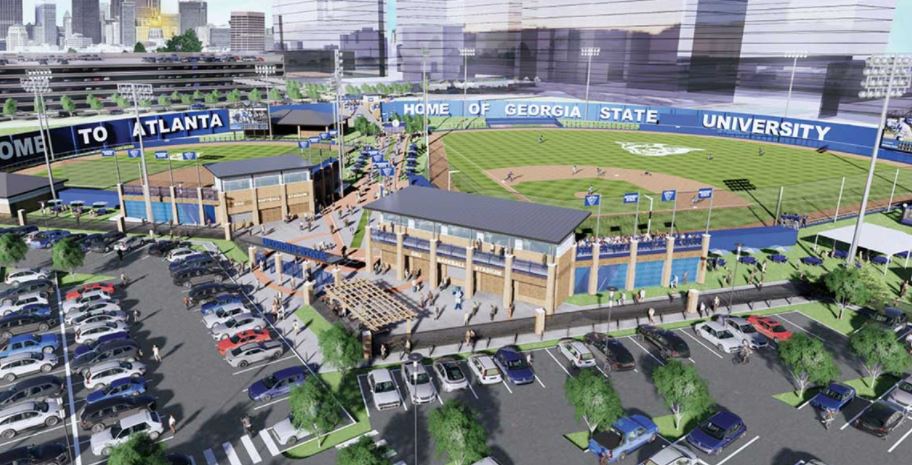Georgia State Will Honor Hank Aaron at its New Baseball and Softball Park in Summerhill

There’s an air of invincibility around Hank Aaron and his 715th home run — the one that bumped Babe Ruth from the top line of the record book.
For more than 60 years, Aaron was a larger-than-life hero and an institution in Atlanta. Through baseball, he managed to attract and unite the city’s Black and white populations, a feat that was remarkable in the South in the 1970s. Aaron was a portrait of courage and humility, reasons his legacy will never be swept into the city’s historical dustbin.
But there’s another reason Aaron’s story will endure: Caretakers, like Georgia State University President Mark Becker, are continuing the work of preserving his achievements.
When talk of a housing development planned for the site of the old Atlanta-Fulton County Stadium surfaced, Becker took a stand. To him, the idea that the very dirt where Aaron hammered out his historic homer could ultimately be covered up by someone’s toilet was abhorrent. Becker felt he had a duty to see to it that the property would be developed in concert with the history that was made there.
“One of the greatest moments in baseball history happened right there. We decided we were going to find a way to bring baseball back to that site, and we never wavered,” he says.
Today, Georgia State is planning for the storied setting to become the home of its baseball and softball programs, which Becker says the Panthers will use to “immortalize” Aaron and his game-changing hit on April 8, 1974. Plans call for the majestic bronze statue erected in Aaron’s honor in 1982 to be relocated from the plaza in front of the Center Parc Credit Union Stadium (formerly Turner Field) to the baseball and softball stadium complex.
The new ballparks will also honor the place where the Atlanta Braves won their first and only World Series championship in 1995. The team moved into Atlanta-Fulton County Stadium from Milwaukee in 1966 and called it home for three decades before moving across the street to Turner Field after Atlanta hosted the 1996 Olympics. Turner Field had been constructed for the Olympic Games, then repurposed for the Braves, who played there until 2016, making way for Georgia State to convert the facility, yet again, into the home of Panthers football.
——-
By Ray Glier, Georgia State University Magazine, Spring 2021 Issue